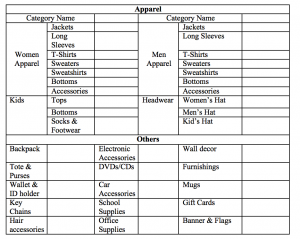I worked on IRB and developed questionnaire.
Following Alex and Prof. Ponto’s advice I tried to describe overall procedures rather broadly than providing detailed description, however since all documents(i.e. survey questions, consent forms, and recruitment materials) should be coherent(those things get stamped at the end) it was quite challenging to make overall IRB proposals and all these documents sensible and go well with each other. As any changes on those documents mean a change request, I tried to asked for everything I might want to do which took me a quite time. IRB has been submitted on last Monday.
As I stated in IRB proposal, throughout the study I intend to
1) Explore shopper’s in-store shopping paths and purchase behaviors both in an actual store and different types of 3D virtual stores
2) Compare and analyze the static measures
3) Assess the validity of measuring in-store behaviors in computer simulated virtual retail environments.
I did not fully describe plans for data analysis however I intend to produce two different studies through this project. The overall structure of the project would be as following.
During stage one, I will investigate the validity of measuring in-store behavior in 3D VR environment by comparing static measures that include 1) walking path 2) deviation from optimal walking path 3) number of item examined 4) category of items examined 5) time spent in the store environment to same data set obtained from actual store.
This is an original & primary plan for STAR project. The biggest challenge is how to assess the validity of outcome measures. With the small number of participants (about 20 participants in each condition) absolute value comparison can not be quite meaningful. As what I am interested in is shopping pattern (e.g. do participants examine VR store in a similar manner as they do in actual store) descriptive analysis could be more meaningful.
Stage two, in which I newly developed my interest, involves exploratory look into in-store behavior. Surprisingly, to my knowledge, there are only handful of researches that examined causal relationship between in-store shopping path and purchase behavior. Even existing pertinent study on shopping path majorly focused on relationship between in-store shopping distance and unplanned purchase behavior. “Unseen is unsold” has become an industry adage however there is no research that explicitly studied how seeing lead to buying. Using the instrumental approach, head mount action camera, I will be able to estimate the direct impact of in-store attention to subsequent searching behavior. To develop a valid research frame work, I am currently working on investigating other variables(i.e. prior exposure to the brand, consumer impulsivity) that have potential impact on such attention-searching relation.
Walking path Data)
Reference path or optimal path: It refers to shoppers planned in-store path that minimize the distance he or she must cover to pick up all planned purchases.
Actual shopping path(=reference path+error): While in the store, the shopper may deviate from the reference path. For example, the shopper who planned to buy winter jacket may be attracted to warm winter hat displayed in the store and thus incur additional travel distance.
Deviation for the shopping path(error): this is primary interest of mine. I would like to see how it relates to unplanned purchase behavior and store layout.
Survey question
(1) familiarity with the University bookstore in terms of product location and store layout
(2) last time visited university bookstore
(3) mental map (do not know how to use this but just included it just in case)
(4) whether participants have shopping list for current shopping trip or not
(5) expected expenditure for the shopping
(6) all the product they plan to purchase

